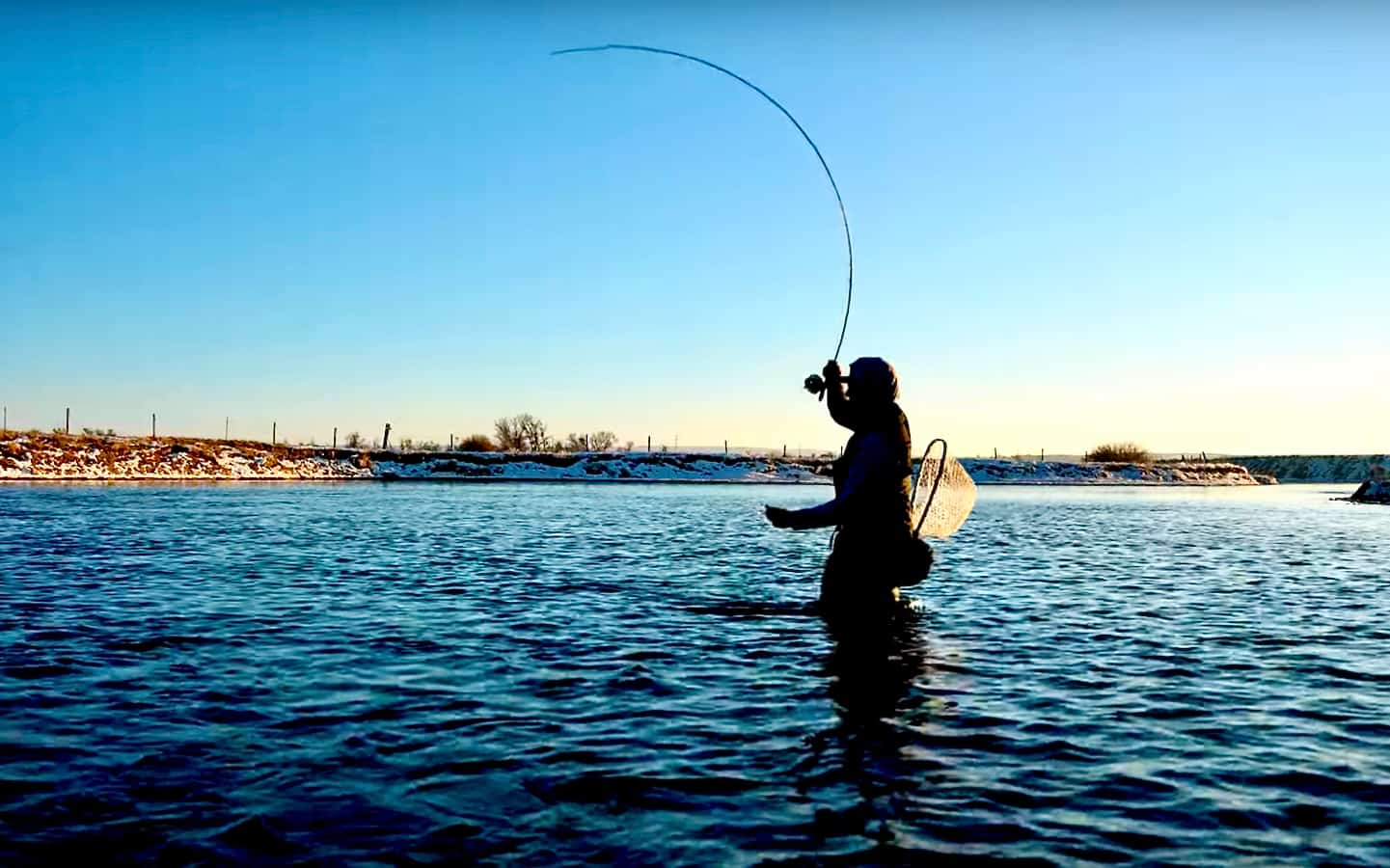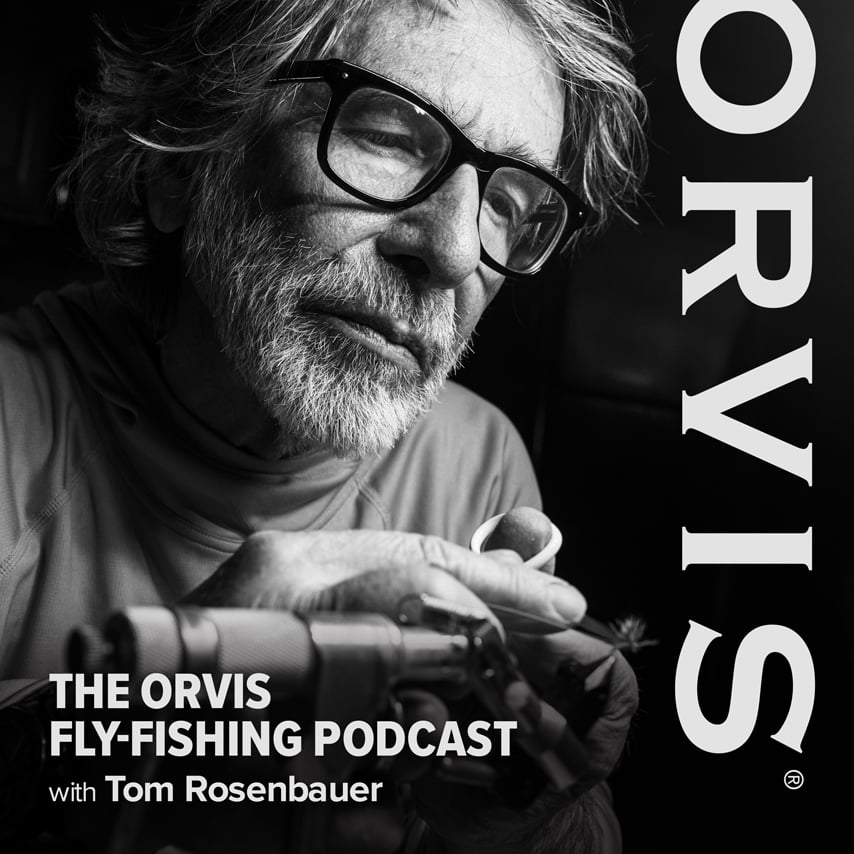Losing the Crowd

There are times when you’ve got to escape your fellow anglers before you get to fool some trout — especially on hard-fished famous Western rivers.
I found myself on Yellowstone National Park’s Soda Butte Creek late last September, and it seemed there were more anglers — good anglers — than willing fish.
Not so long ago, Soda Butte, like most Yellowstone rivers, was a lonely place in late September. Not anymore.
This little tributary to the Lamar River is now as famous — and as hard-fished— as the Madison or the Firehole. In fall, hatches of tiny blue-wing olive mayflies and bigger Drake Mackerel mayflies get the Yellowstone cutthroat rising. The cutts tend to pod up in this creek, so you can hook a few gorgeous fish out of a nice spot, such as deep, undercut bank studded with rocks.
Keeping a low profile is key. Anglers with worn wader knees see more cutts tip up though clear water for a dry fly.
I didn’t want to horn in on the anglers who got up earlier than I did that day. Maybe most of them didn’t spend the morning swinging Barnes Hole Buggers to runner brown trout on the Madison before making the long drive over Dunraven Pass to find Yellowstone cutts.
So, I started walking. My options were to keep moving upstream until I got far enough away from the easy parking. Or, I could move downstream to the Lamar River and hike until I found a pod of feeding cutts.
Putting one foot in front of the other is a simple way to find solitude — or at least more elbow room — on rivers that run near a road. In the past, I figured very few of my fellow anglers would walk more than a mile from the parking spot, but that has changed a bit I often find that younger anglers have pushed on quite a ways in search of nice trout.
So what’s a middle-aged angler to do when walking isn’t enough?
Fishing the Wrong End
Fishing the right water at the wrong time of day sometimes works, especially if the river gets a lot of guided anglers in drift boats.
Drift boat anglers are committed to moving downstream all day, so a popular section of river will see the upper water get a lot of pressure in the morning, and the lower water gets that pressure in the afternoon.
If possible, I’ll try walking into the lower water in the morning — well before the drift boats make it downstream. I move into the upper section in the late afternoon or evening, well after most of the guides have rowed quite a ways downstream.
In this way, I’m on water that doesn’t get fished that much — at that time of day. Trout are professionals at noticing things, and I suspect they notice when fewer anglers are on the water.
Relaxed trout tend to be happy feeders.
Now, this bit of sneakiness doesn’t always work. Sometimes the very same guides who rowed their clients through that upper section come back that evening to fish on their own.
Still, there will be less pressure on the trout.
Fishing the Wrong Water
A more extreme method is to fish a good river at the wrong time of year. On my home Deschutes River in Oregon, hordes of anglers beat the bank water to a froth during Salmonfly Madness in late May and early June.
Once the salmonflies and golden stones are done for the year, many of these anglers find another river to fish. The Deschutes flows through a arid, rocky canyon — most of Oregon is an endless sagebrush desert — and the sun turns into a blowtorch during July and August. It just feels too damn hot to fish.
But the water is much cooler than the air — and the redsides rainbow trout are still eating bugs. Finding shade is key. So is learning how to Euro nymph. So is carrying a flashlight, so you can walk the two miles back to the truck in the dark — after fishing the evening caddis hatch.
My favorite time of the year to fish the Deschutes is during the dog days of summer — which is also when summer steelhead are arriving about 60 miles downstream.
The anglers chase the steelhead in the lower river and neglected, relaxed rainbow trout happily rise in the upper river.
It’s possible to catch your nicest trout of the year when you fish the right water at the wrong time. Think of any river that is famous for a big hatch early in the season. There’s a good chance that most anglers will have moved on to another big hatch on a different river a month or so later.
But the trout are still there, and they eat every day.
Back to Yellowstone
On that September afternoon, I ended up on a lonely stretch of the Lamar River. My spot was a 30-minute hike from the road — through the Lamar Valley’s golden grass and platters of dried bison dung. A few pronghorn danced in and out of dips in the meadow as I hiked along.
I found a nice little pod of Yellowstone cutts tipping and sipping drake mackerel duns. I tied on a tan size 12 Sparkle Dun and eased down a bank studded with big boulders.
A nice cutt ate the fly on the first cast. No other angler was in sight. It is so much fun to see a big dry fly get sucked down in the slow-motion rise of a Yellowstone cutthroat.
While playing the trout, I heard footsteps. Lots of heavy, thudding footsteps.
I looked around. A herd of bison was moving upstream right towards me. I had about 10 minutes before about 30 hulking — and cranky — animals arrived and cut me off from the road.
The trout probably felt the bison coming, but they ate steadily, in bulging, swirling rises. I stared at them for a few seconds. Then I looked at the bison — much closer now. I caught their dusty, cattle-like scent on the breeze.
I reeled in and headed back to the truck.
Crowds can be a problem on popular western rivers, but this particular group of heavy locals owned the place.











